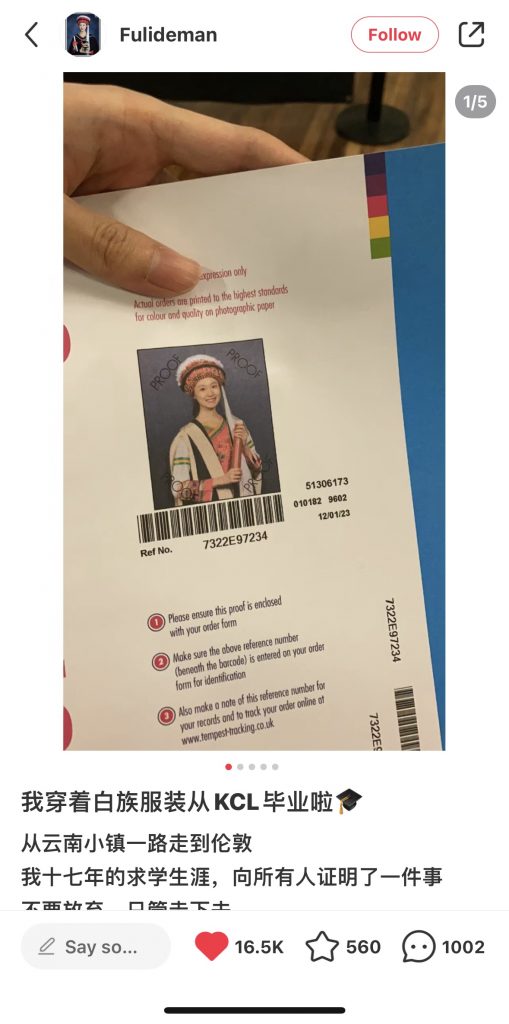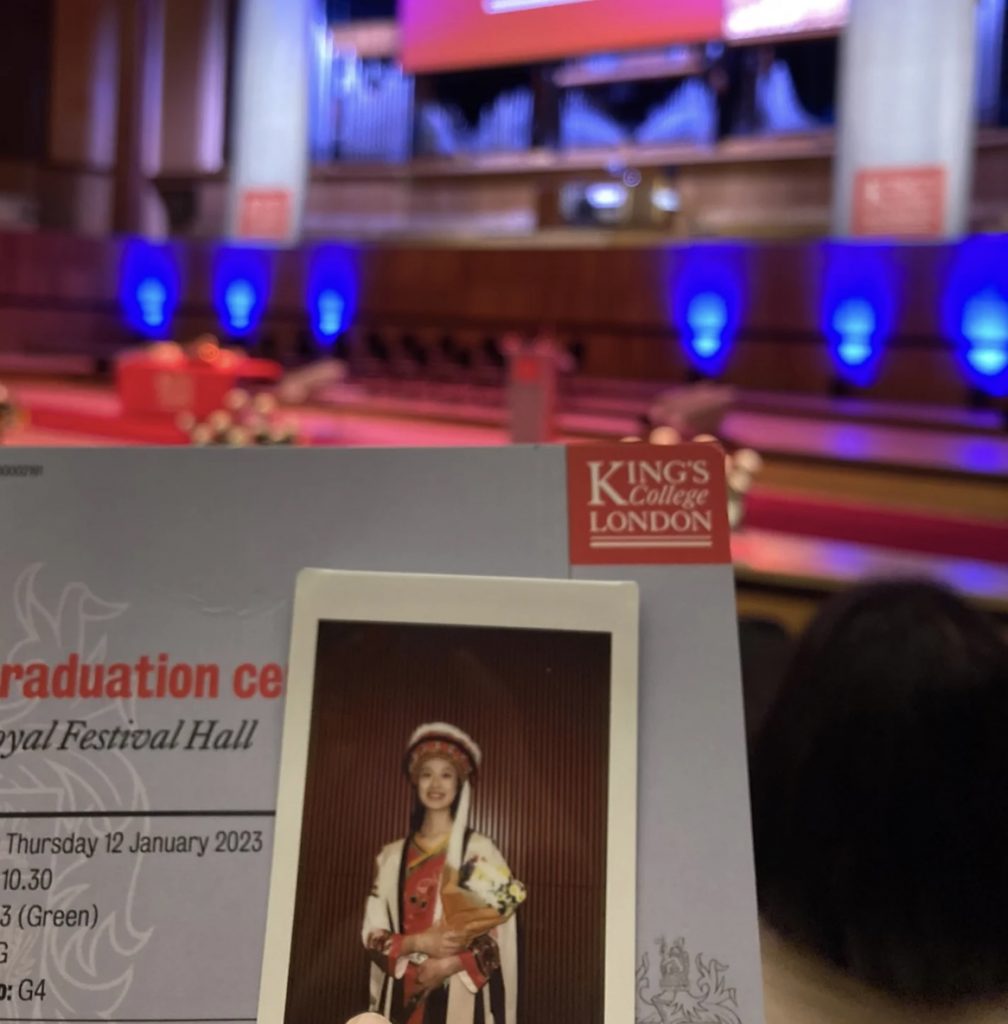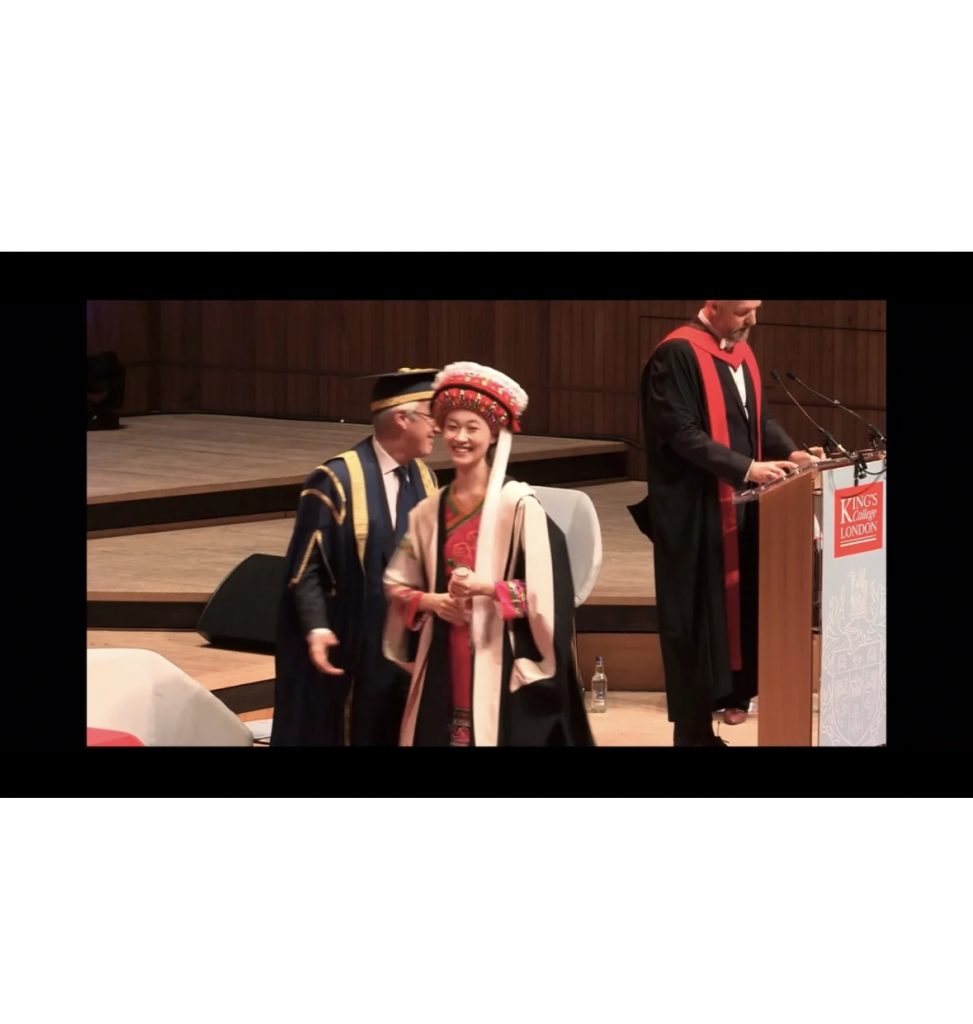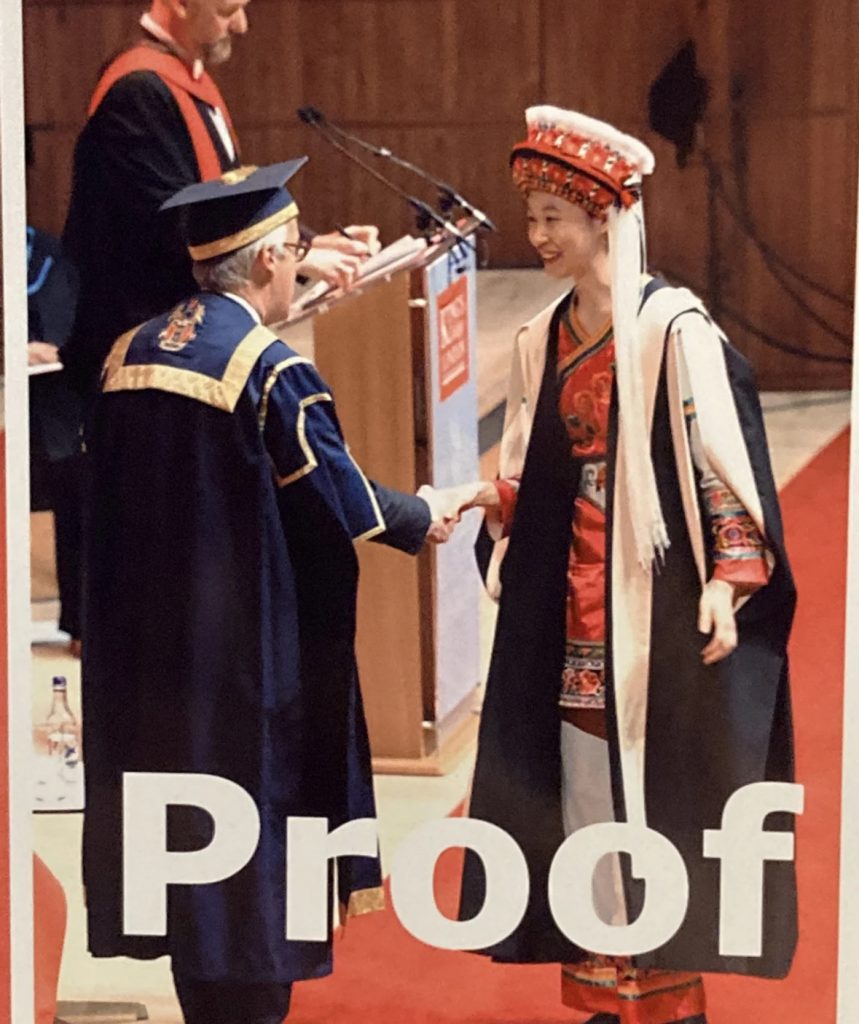A year ago, I accidentally saw a news report on my social media about a girl from the Bai ethnic group in Dali Autonomous Prefecture who attended her graduation ceremony in the UK wearing ethnic costumes. At that time, I thought such a girl must be very cool. Now, I think it is particularly suitable to find her as an interview subject for the project I am involved in, so I spent some time to get her contact information. There is a paragraph in the news report that particularly touched me. “In fact, British friends are not unfamiliar with Chinese Hanfu, which is to a certain extent due to the promotion of local overseas Chinese and international students. However, people know very little about the costumes and culture of other ethnic groups in China.” Therefore, in the promotion of other ethnic minorities in China, we still have a big step to complete, but first of all, we need to promote it based on cultural appreciation.

———————————————————————————




- Please introduce yourself and what you are doing now.
My name is Hannah, and I just returned to China this year. I am a native of the Bai ethnic minority in Dali. What I am currently doing is a tourism project about the in-depth cultural experience of Dali, including leading foreign friends to understand Dali from the city walk.
I hope to discover some niche attractions in Dali that have real historical background and real folk cultural significance, and then be a tour guide to lead a small group, a real quality group. Then later I hope to recruit more friends with different academic backgrounds, and then we can expand this scope to not only the ancient city of Dali, but also other places in Dali. Then introduce everyone to the unique plant species on Cangshan Mountain, etc., or take everyone to understand our Bai people’s own native beliefs.

- Can you introduce your ethnicity and some ethnic characteristics?
I am a member of the Bai ethnic minority. The name Bai was determined after the founding of the People’s Republic of China in 1949 when we conducted a census and ethnic survey.
In the past, we had many different names. We were called Min Jia (based on the literal meaning of the Chinese characters, which can be understood as the family of the ethnic group) in the Han Chinese. Later, because of our own language system, we called ourselves Bai Zi. So later in the census, our ethnic group was determined to be the Bai ethnic group in Chinese. Our history can be traced back to the pre-Qin period, which is about 3,000 years ago. The group of Bai people gathered in Dali today are the ancestors of our Bai people. In history, we once established the Nanzhao Kingdom in the location of Dali today, and then established the Dali Kingdom. In the Yuan Dynasty, after the army led by Kublai Khan captured Dali, the Bai people no longer had their own independent regime after the Dali Kingdom ended its rule. Finally, Dali became a city in Yunnan.
- When you attended the KCL university graduation ceremony, you wore Bai ethnic costumes. I would like to ask what was your purpose in making this decision?
First, the graduation ceremony is a very important event in my life. At that time, due to some reasons (epidemic), my family and friends were unable to come to the UK to attend my graduation ceremony. So, I wondered if there was any way to make me feel as if they were by my side and could see me. Then I thought that I wanted to wear the clothes that I was most familiar with, and the clothes that made me feel the most psychologically. I hope to wear it to my graduation ceremony, and it will feel like my family, friends, and the place where I grew up are accompanying me to graduate. Accompany me to experience this very important moment in my life. Then I am more grateful that I later posted the photos of this graduation ceremony on my social media, and that post received more than 200,000 views. Many people left messages saying that they felt that I spread our nation, which is also what I felt very moved and proud of later.
- What did others think of you wearing such clothes during the graduation ceremony? Not only Chinese friends, but also friends from foreign countries.
I feel that to be frank, I was probably the one who received the most enthusiastic applause from the audience when I went on stage to receive the graduation certificate. Because my headdress was very big, and everyone could see it as soon as I appeared. Someone immediately said, “This person’s clothes are very unique.” I was on the stage at that time, and I felt that the audience applauded loudly, and I was very happy. Later, after the ceremony, we had a group photo session. I felt that many of my foreign friends wanted to take a photo with me, not only themselves, but also their families. I had a good Turkish friend at that time, and everyone in his family wanted to take a photo with me. I felt that I suddenly became a social star! Haha, yes, it became a “check-in point”! They also asked me a lot of questions about my clothes and asked me about my ethnicity. Maybe before, when people mentioned that you are from China or you are Chinese, everyone subconsciously thought that all Chinese people are Han. I think it is an opportunity to promote our ethnic group to the world, so people want to know more about other ethnic minorities in China.
- According to your observation, do your generation of Bai people know something about Bai culture? (Including clothing, some local culture, etc.)
I think it is difficult to answer this question in general, it really depends. If you live in Dali, and have lived in this Bai settlement since childhood, you may be born to speak Bai language, which is the language of our ethnic group. Because it is completely different from Chinese, our ethnic language is your mother tongue, and Chinese becomes your second language. But there are also many young people who were born in this city and may not live in this autonomous region. For them, they know less about Bai culture. And as for clothing, frankly speaking, young people nowadays rarely wear a full set of Bai clothing daily. The earrings I wear today are a special product of the Bai people. They are made of Bai tie-dye. In addition, there are silver bracelets, and we will engrave our own traditional copywriting on them. Traditional accessories like that are still very popular among young people. People are willing to wear them as their daily clothes. But complete sets of clothes, such as the formal dress I wore at my graduation ceremony, are rarely seen in daily life.
- How do you think we can better convey the culture of the Bai people to some friends from other places and foreign countries?
I think the focus of cultural communication is not on what products you spread. For example, my earrings are made of tie-dye and have a very special shape. When doing tie-dye cultural communication, the focus is not on what kind of patterns you make, nor on what kind of clothes you cut the tie-dye items into. The key is whether you understand the tie-dye process? What is the most important core? How do we do it in our traditional way? For example, in our traditional handicraft concept, we will use Isatis root as a dye, which is a natural and precious medicinal material. So why do we use it to dye cloth? Because in the past, medical conditions were not so good, and Isatis root originally had a certain disinfection effect as a medicinal material. When you use it as a dye, people will feel that you are wearing “medicine” on your body, which will have a certain effect of protecting health. In addition, when we do tie-dye, the traditional pattern is some repeated and changing geometric figures. The key point is the understanding of beauty of our Bai people. For example, we think that geometric patterns are beautiful, and then we will use our wisdom to deform this pattern. I think this is the key point of our Bai culture! If you just say that I made a hot-selling product, I used the tie-dye method, but your pattern or your production process may have nothing to do with our Bai traditional culture, I will feel that you seem to have lost the essence of this culture. You just made a hot-selling product, but you didn’t really spread our culture.
- What do you think of foreigners wearing Bai costumes? Do you feel offended?
In fact, Dali, as a tourist city, has been known by many European and American tourists since the 1980s. We even have a street called “Foreigner Street” (because that street gathers many foreign tourists), and they live in Dali. So they may wear a Bai straw hat or carry a tie-dye shoulder bag when we were young. We think this is a very normal thing. If I see that they like our products or our clothes, I will feel very proud. If you are willing to wear the clothes of another ethnic group, it means that you understand and are interested in the culture of this ethnic group. I think this is a very important foundation in cultural exchange! This also shows that you have an open attitude towards the other party’s culture. But I cannot accept the recent phenomenon of many other ethnic minority clothes appearing in Dali Bai Autonomous Region, especially in Dali villages, where more and more people choose to do so.
- How do you think we should better inherit our own ethnic culture?
I think it is still what I just said. When you inherit culture, the focus is not on what products you have made or whether they are hot-selling, but whether you really understand the essence of your culture. If you just do it simply, I think it is a very superficial thing. When you only focus on the product but ignore its cultural connotation and its historical background, the things you make may end up in the end. When others see these things, they will not know that they are the products of this ethnic group, and they will not know that they represent the Bai people. So I think it is very important when doing cultural communication that you must understand the spirit of this culture and the most important core of this culture. Then you can use this core to develop what you want to do, instead of just copying the same thing or misappropriating it.